Introduction
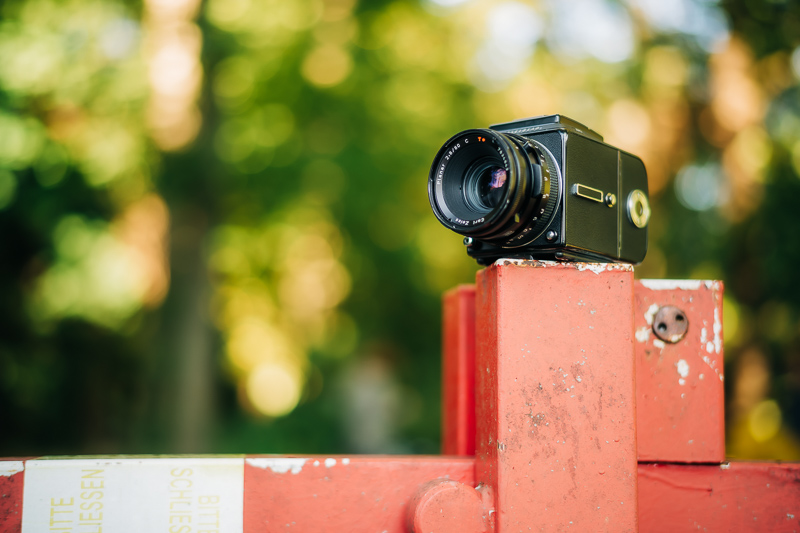
The bokeh quality – or a lens’ rendering for that matter – is probably one of the most discussed and maybe also most important aspects of a (fast) lens. While many people think only the focal length and the maximum aperture are important, there is actually much more to it, as I will try to show you in this article. This knowledge may also aid you in finding the best lens for your specific needs.
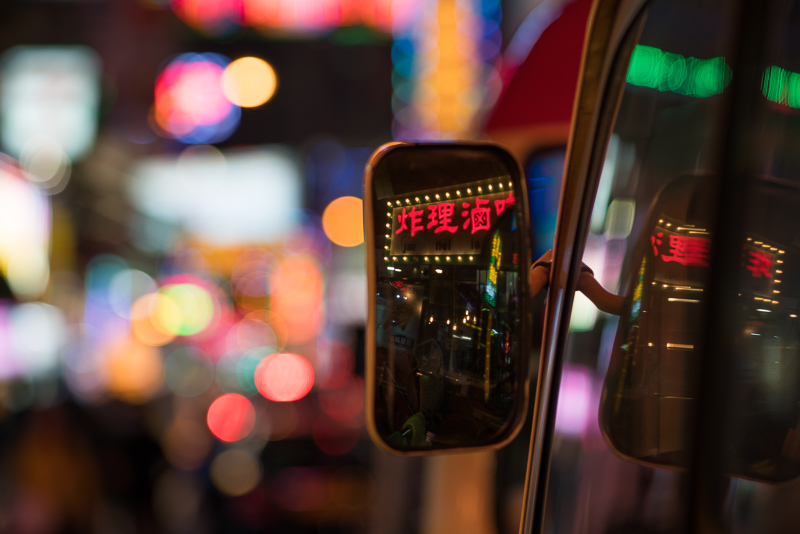
There are two main things to consider here: bokeh quantity and bokeh quality, which we will both have a look at.
I will mostly be talking about background bokeh here though, as foreground bokeh is more of a niche application and might also overcomplicate this article. I will also not talk about local pixel level adjustments to alter the bokeh rendering.
Contents
Quantity

The quantity of the bokeh depends not only on the lens’ specifications or the distance relations in the scene, but also on the optical vignetting and field curvature characteristics of a given lens.
Maximum Aperture and Focal Length
What is a fast lens? A 50mm lens with a maximum aperture of f/0.95 probably is, same goes for an 85mm f/1.4 lens. Now a 35mm f/2.8 most people wouldn’t consider fast whereas a 400mm f/2.8 is considered a very fast tele lens, despite both having a maximum aperture of f/2.8.
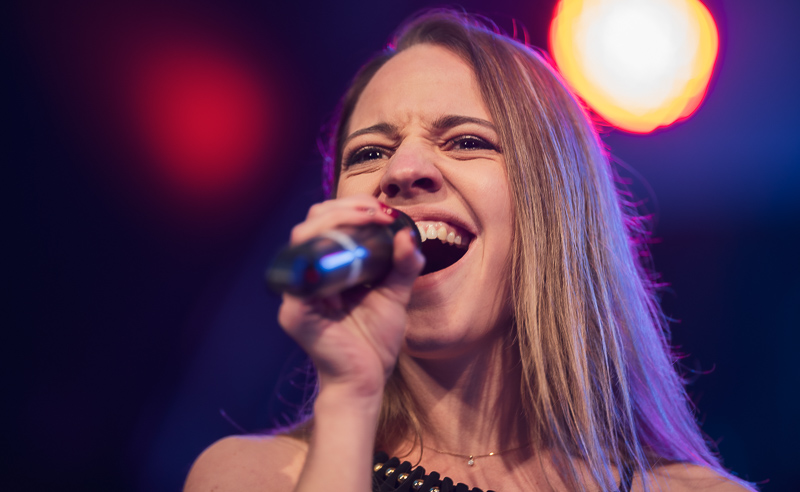
What becomes obvious here: focal length and maximum aperture are both equally important and if you divide focal length by maximum aperture you get the size of the entrance pupil, which is a good reference point to evaluate the “blur potential” of a certain lens. Bigger is generally better here, I already talked about this in my article about Brenizer/Bokehpanorama, so maybe have a look there if you are curious what lenses to use in order to achieve the highest “quantity” of bokeh in your pictures.
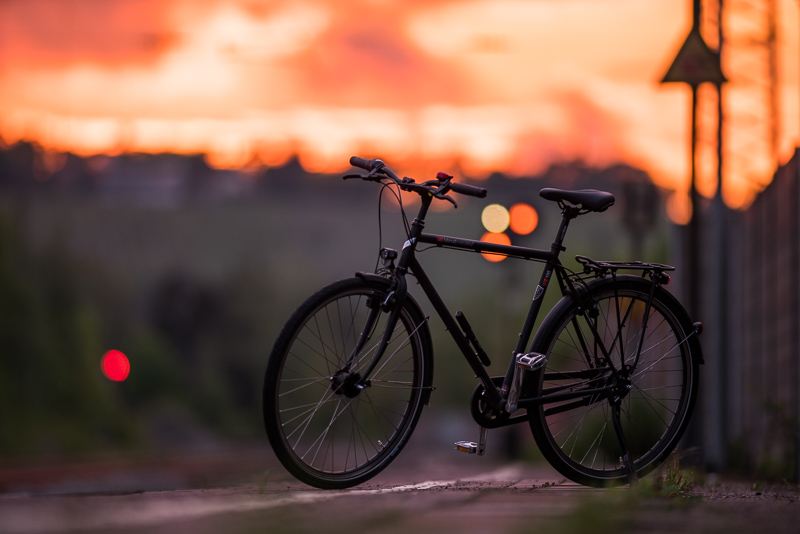
The take away message from this section: all else equal a faster lens of the same focal length will (or should, see “optical vignetting” section) yield more blur and a longer lens with the same maximum aperture will also yield more blur (you need to adjust the distance to your subject for similar framing though).
I guess most of you were already aware of this 🙂
Distance Relations
What is actually more important than the lens you use are the distance relations in the scene. To get the highest amount of blur your subject should be as close to the camera as possible and the background should be as far behind the subject as possible.
These three pictures have all been taken with the Laowa 35mm 0.95 set to f/0.95. In the first picture I am close to the woman, the background is blurred noticeably. In the second picture I am farther away from the woman, the background is still a bit out of focus.
Now in the third picture the distance to the woman is similar to that in the second picture, but that background is much closer and at this output size you can hardly tell it is out of focus at all.
How important the focus distance is also becomes very apparent when using macro lenses, at high magnifications – even when you stop down the lens a lot – the depth of field is thin as paper:
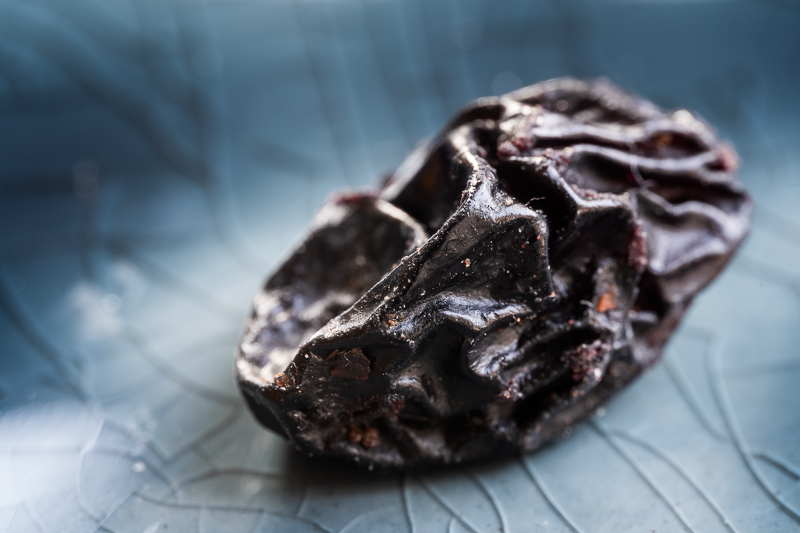
To visualize what I have written in the past two sections you can also use a Depth of Field Simulator. The following aspects can not be simulated there though.
Optical Vignetting

Now when I said a lens with faster aperture will always yield more blur then a slower lens with the same focal length this is true for the center of the frame, but the corners can be a different story, as there is this thing called optical vignetting.
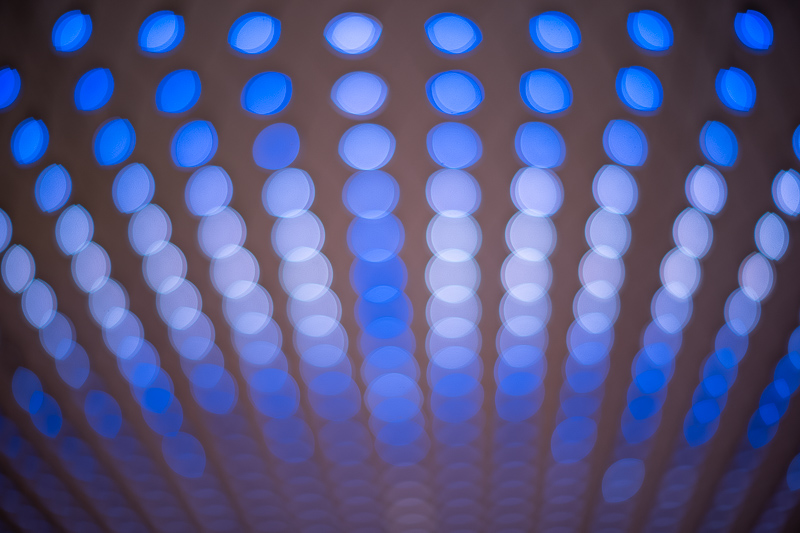
In the center of the frame almost every lens will render a perfect circle, but only lenses with very low optical vignetting will keep this shape in the corners, as optical vignetting leads to the truncation of light circles towards the borders of the frame. This also leads to the depth of field increasing towards the corners, so most lenses will show a higher amout of blur in the center of the frame compared to the corners.
We will have a look at a few different lenses here and we will move from the center (left) to the extreme corner (right) and see how the shape and size of the light circles changes:
The Sigma 35mm 1.4 Art shows a very typical/average behaviour here. The MS-Optics 50mm 1.0 ISM shows very strong optical vignetting – considering its maximum aperture and size not surprising – the Sony FE 85mm 1.4 GM on the other hand is one of the lenses that show a surprisingly low amount of optical vignetting, therefore it can create more blur in the corners than even faster 85mm f/1.2 lenses.
I also included the Zeiss Loxia 85mm 2.4 in this comparison. Just looking at the specifications one would think the Sony FE 85mm 1.4 GM – when stopped down to f/2.4 – would show the same amount of blur as the Zeiss Loxia at f/2.4, but as you can see the difference is quite big not only in the corners but also the midframe area and this will be noticeable in the field as well.
A very high amount of optical vignetting can also lead to what is often referred to as “swirl”. There are certain lenses available that are designed to give this look (e.g. Petzval 85mm 2.2):
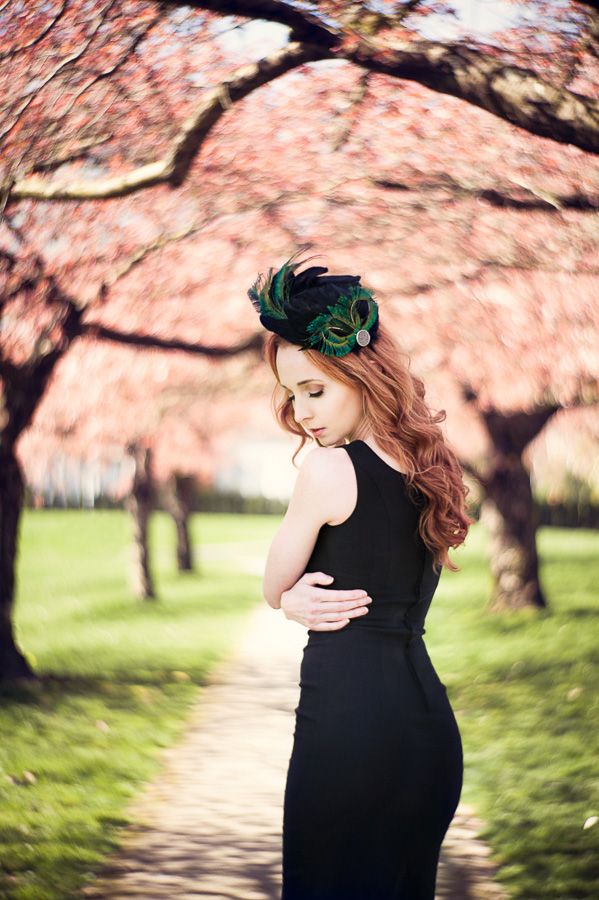
Field Curvature
If you had a look at the previous sections and you were thinking “yeah, I knew all that already” this is where it might get interesting for you. I already wrote in the previous section that due to optical vignetting the depth of field towards the corners increases, now we will add field curvature to the equation.
Field curvature can take on various shapes (e.g. V or W), but instead of discussing this we will have a look at this comparison. We are comparing the MS-Optics 50mm 1.0 ISM @ f/1.4 to the MS-Optics 50mm 1.1 Sonnetar @f/1.4. Same focal length, same aperture, so we would expect the pictures to look similar in terms of depth of field and bokeh, but as you might have already guessed, this is not the case here, not at all.
Focus in both pictures is on the front of the Lotus Esprit. Now the background in the first picture looks like I would expect (and find appealing): the boat in the background as well as the corners are nicely out of focus.
Now in the second picture the boat as well as the corners look almost as in focus as the car in the front. Both lenses show a very similar amount of optical vignetting, so what is the reason for this?
The reason is field curvature. Let’s imagine we are having a look at the scene from above. Now to make it more obvious we are at first assuming an “ideal” lens with zero optical vignetting and no field curvature (this ideal lens is actually what people often think all lenses behave like):
With the fictional “ideal” lens a bar with constant depth will be in focus and the bokeh in the corners will be the same as that in the center of the frame.
The 50mm 1.0 ISM shows “good” field curvature, despite high optical vignetting (which leads to the bar getting wider towards the borders) the corners are still nicely out of focus.
The 50mm 1.1 Sonnetar shows “bad” field curvature, so towards the corners the focal plane bends to the back which leads to the things farther away being in focus again.
Compared to the 50mm 1.0 ISM the depth of field is not bigger, just its shape is different.

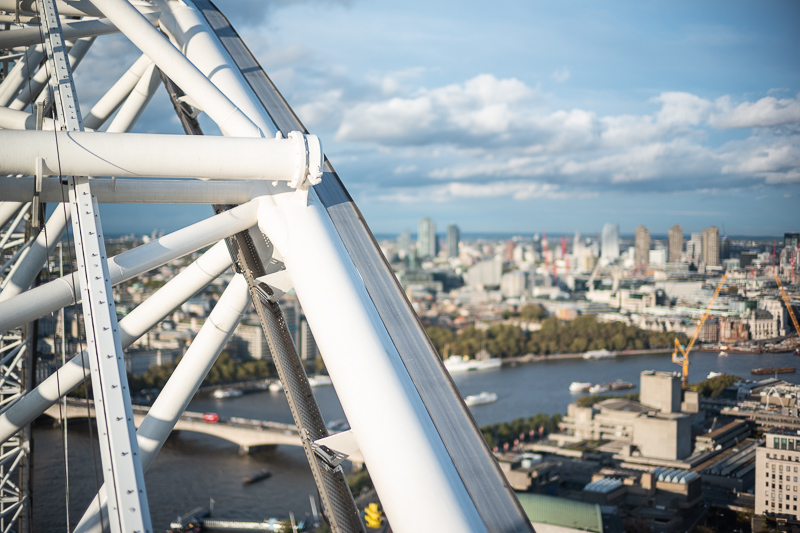
Now this is something that you can neither find in a lens’ specification sheet nor its MTF graphs, only thorough testing or using the lens in the field can reveal this.
Rangefinder wide angle lenses designed for film (or Leica M digital cameras) also show additional field curvature on Sony cameras due to the thicker filter stack in front of the Sony sensors. If you want to learn more about this rather specific topic maybe have a look at our articles covering issues with rangefinder wide angle lenses on A7 series cameras or the Kolari UT modification.
Quality
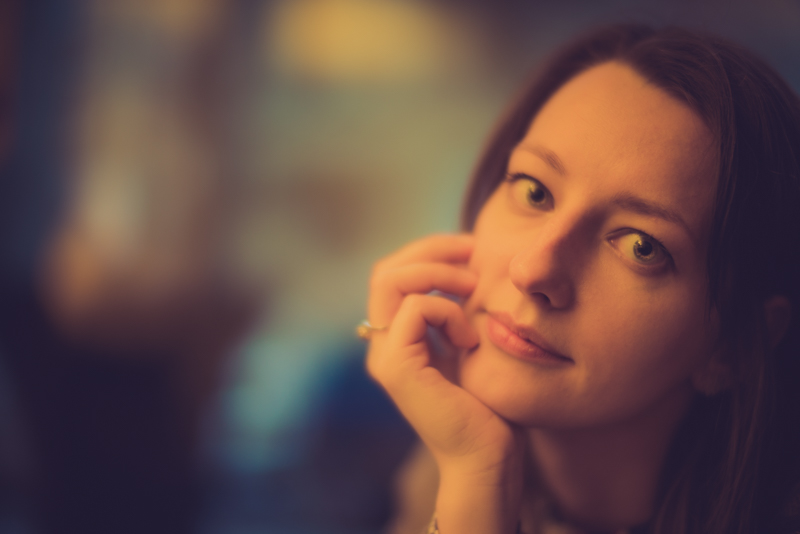
Optical aberrations can have a significant influence on the bokeh rendering and even though they are called aberrations their influence is not always bad.
Some aberrations, or their degree of correction, can either lead to softer (low contrast, glow) or harsher (higher contrast, outlining) bokeh.
Also keep in mind stopping the lens down can significantly reduce most of the optical aberrations, so stopping a lens down will not only reduce the quantity of the bokeh, it may also influence the quality (sometimes significantly so).
We already have an article explaining various optical aberrations, if you are not familiar with the terms I am using in the following sections it might be a good idea to have a look at that article first.
Spherical Aberration
Spherical aberration can have a huge influence on the bokeh and we have to differentiate between undercorrection and overcorrection.
As can be seen from the following comparison an overcorrection will lead to higher contrast and outlining (as well as increased sharpness) whereas an undercorrection will lead to lower contrast and sometimes even a soft glow around highlights.
Some manufacturers also offer lenses with overcorrected spherical aberration for those that are fans of the look, one such example is the Voigtländer 35mm 1.4 Nokton Classic E. In a direct comparison to the Voigtländer VM 35mm 1.7 Ultron (which offers a smooth bokeh rendering) the outlining of the light circles (a sign for harsh bokeh with double edged structures) is very obvious:
In the past an undercorrection of spherical aberration meant a lack of sharpness (the Nikon AF-S 58mm 1.4G is a good example of this), but the advancements when it comes to the manufacturing process of aspherical elements allowed the manufacturers to realize lenses that combine an undercorrection of spherical aberration – to achieve smooth bokeh – with good sharpness, some recent examples of lenses following such a design principle are the Sony FE 85mm 1.4 GM, Voigtländer 50mm 1.2 Nokton E or the Sigma 35mm 1.2 Art DG DN.
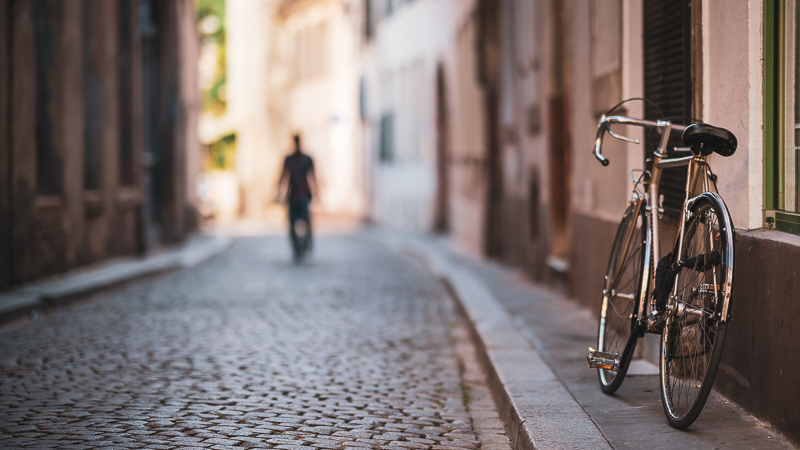
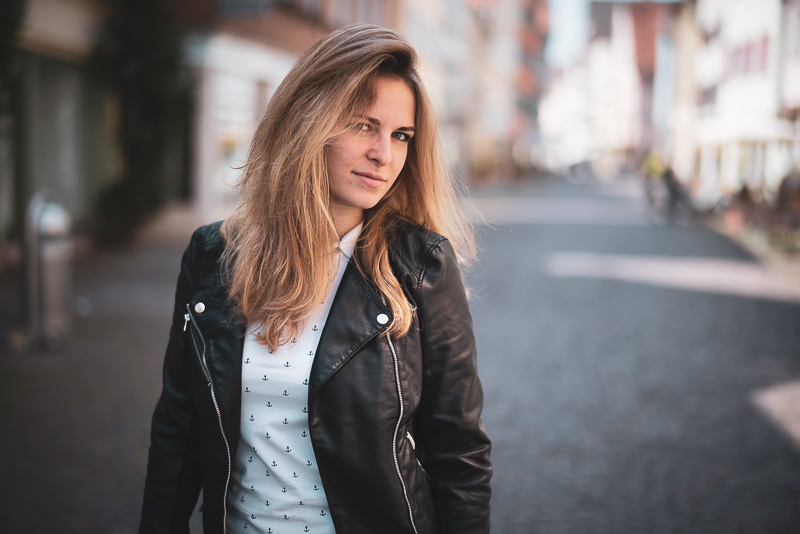
Coma
Coma is an aberration astrophotographers usually care about a lot. A bit of undercorrected coma can actually lead to softer bokeh in the corners, a high amount on the other hand can lead to severe issues with point light sources, as bokeh highlights can take on obtrusive shapes like trapezoids or triangles:
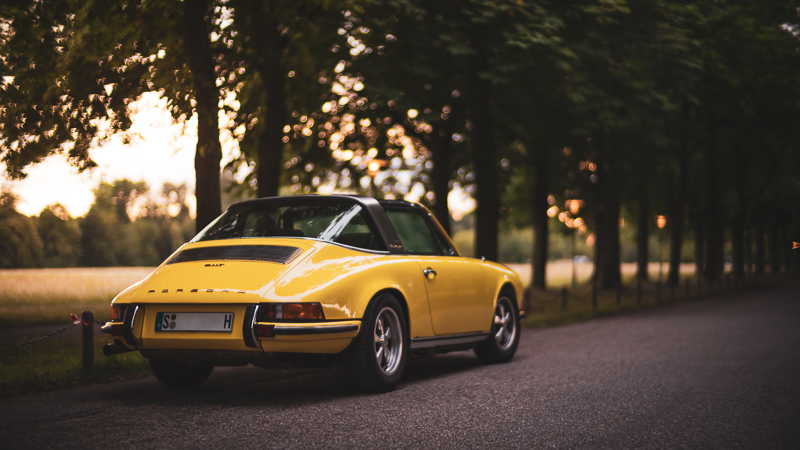

Astigmatism
A low to medium amount of astigmatism is usually nothing to worry about, but some lenses with a high amount of astigmatism can show very obtrusive double edge artefacts in the out of focus areas (license plate in the first picture, black bar on the document in the second):
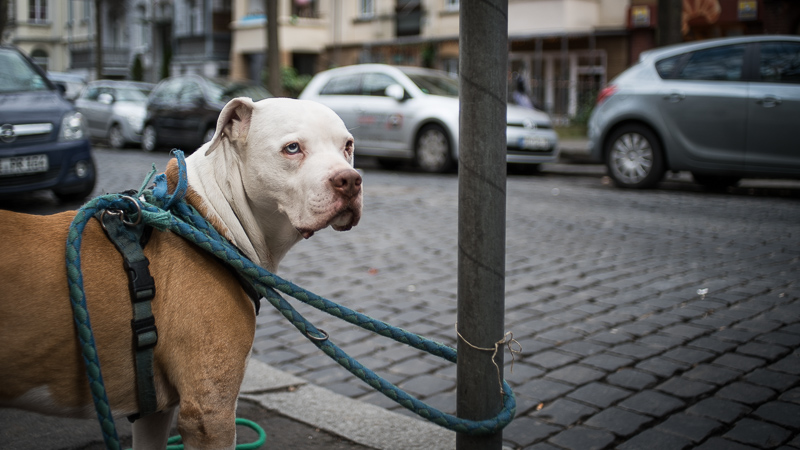

Longitudinal CA / “Bokeh Fringing”
Longitudinal chromatic aberrations (short: “CA” or “loCA”) lead to (usually) magenta and cyan outlining in the out of focus areas. Depending on the level of correction this can become quite obtrusive (and is also hard to correct in post):

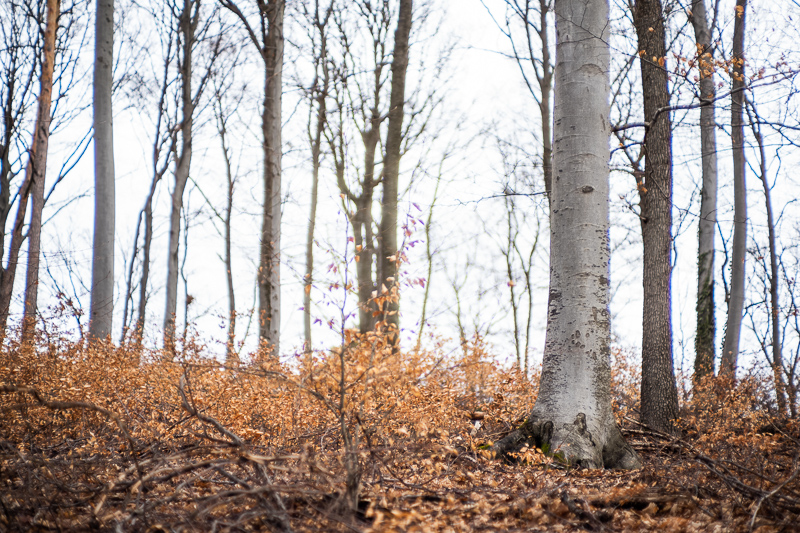
Nevertheless: a perfect correction of longitudinal CA – as can be encountered with some lenses carrying an “Apo” tag – doesn’t necessarily lead to improved bokeh rendering. Voigtländer’s Apo-Lanthar lenses for example show a rather harsh, high contrast bokeh rendering with a tendency towards double edged structures:

Conclusion
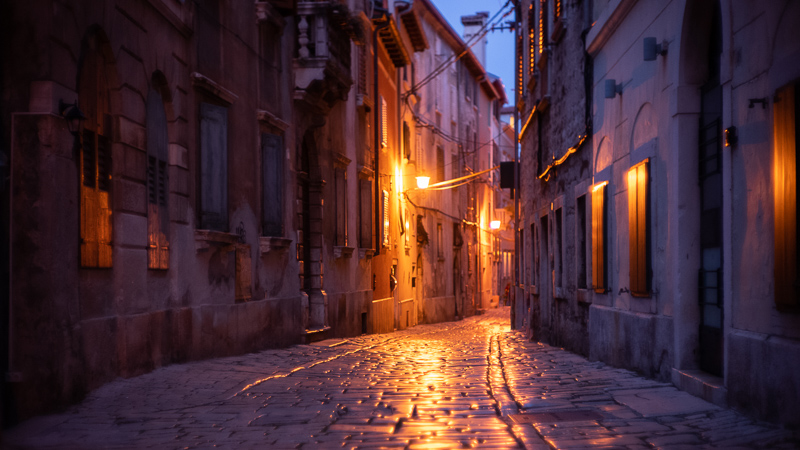
When deciding between lenses many people ask which lens is “sharper” and if you are mainly into landscape and architecture photography there is nothing wrong with that, but when dealing with portrait lenses: does this really matter?
Does a picture catch your eye because it has been taken with a lens that has slightly higher MTF than that of the competition, or is it the depth created by transition from areas-in-focus to areas-out-of-focus that draws you in?

The thing is, unlike MTF (contrast and resolution), bokeh cannot easily be measured. It is possible to compare lenses and you might find you like one more than the other, but at a different focus distance or with a different background you might prefer the lens you have dismissed before. This is the reason I try to spend a lot of time on the bokeh evaluation when reviewing lenses and also have a look how they behave at different distances and in different scenarios.
Still, I cannot always discuss the effects of the different aberrations in great detail, therefore the idea was to summarize all of that in this article. I hope you found it helpful and that it can aid you in chosing lenses that give your pictures the look you desire.
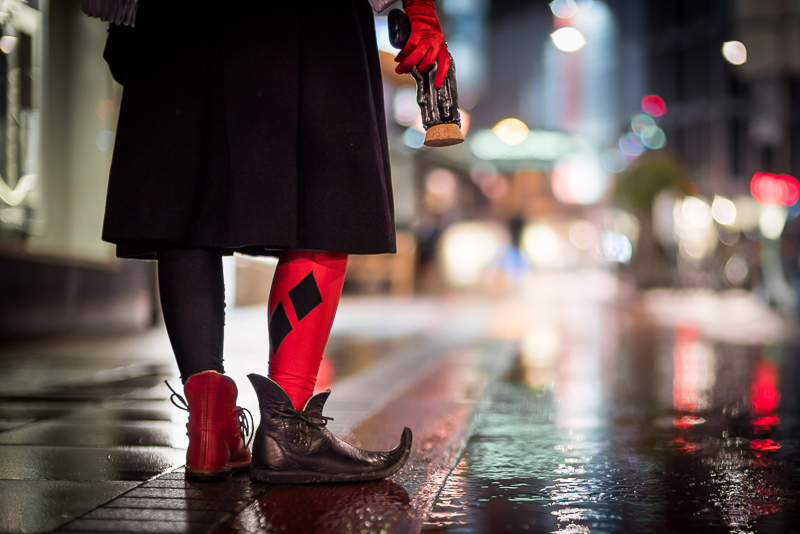
Further Reading
- Sony FE lenses: Our comprehensive and independent guide
- Sony FE lenses: Our guide to portrait lenses from 85 to 135mm
- What makes a picture good?
- Lens aberrations explained
Support Us
Did you find this article useful or just liked reading it? Treat us to a coffee!
![]()
![]()
![]() via Paypal
via Paypal
Latest posts by BastianK (see all)
- Vivo X200 Ultra – The Death of the compact Camera - June 29, 2025
- Review: Laowa 12mm 2.8 AF - June 26, 2025
- Review: Nikon AF-S 35mm 1.8G - June 21, 2025













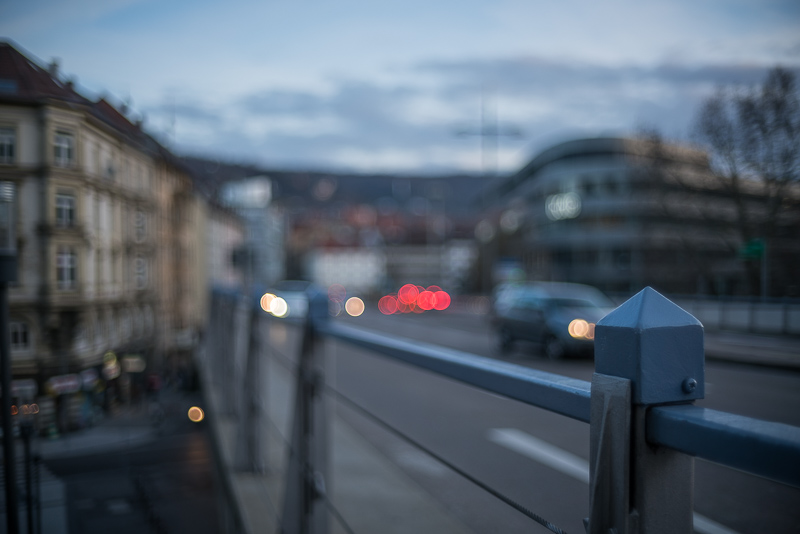


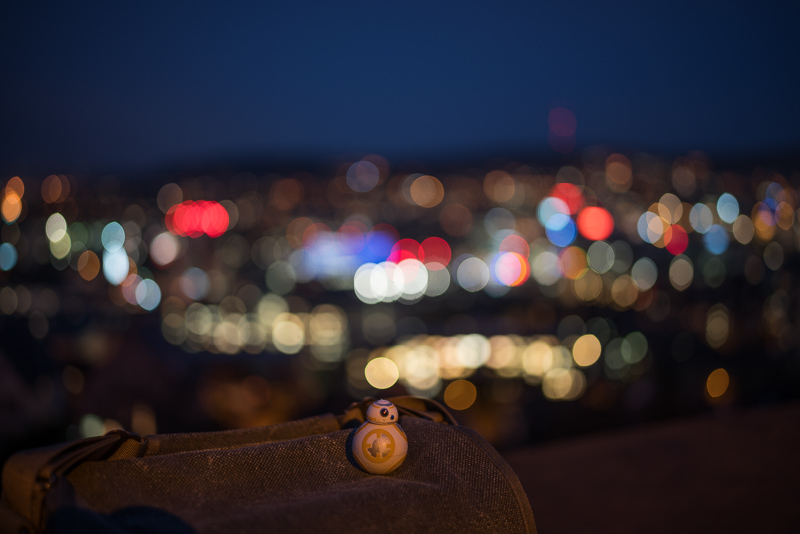
Thank you for the nice article. MS optics is my favorite. I’d also like to suggest Takuamr M42 lenses for testing. have unique bokeh as well as specific imaging
Very glad you wrote the article! nicely done and thank you. This was very helpful.
I feel like the Nokton 50mm 1.2 almost perfectly balances spherical aberration correction, sharpness and micro-contrast. The VM 35 1.7 seems to do that well too. Unfortunately there don’t seem to be many ~85mm lenses that do that.
Brilliant Article!
I was very disappointed about my lens not producing round circle bokeh, especially for big aperture tele-photo lenses. But after reading your website, I realized that it’s a general problem. My solution is to use medium format lens on full frame camera body or attach full frame lens to apsc camera. I’m thinking about using apsc camera with sigma 105mm f1.4 lens ( about 160mm f2 full frame equivalent), it seems when using f2, the bokeh are super round in aspc format.
Thank you for all the great articles!
bokeh reference: https://www.cameralabs.com/zeiss-otus-100mm-f1-4-review/2/
Yeah, the Sigma 105mm 1.4 should be a good choice for this approach 🙂
I am actually surprised how bad the Zeiss Otus 100mm 1.4 is doing…
Great article.
The point about field curvature, which might be of passing interest.
Despite it being something “you can neither find in a lens’ specification sheet nor its MTF graphs”, it has been argued that correction of it is “the pivotal problem of photographic lens design” and that *all* lens types can be considered a consequence of correcting that (and can be grouped accordingly).
This isn’t really too dense of a read (I’ve never touched “applied photographic optics”) and recontextualises lens designs you may have a patchy awareness of.
https://doi.org/10.1117/12.959088
Or put it through Scihub, which has access to it.
Thanks, Bastian, for another interesting and informative article.
Although many photographers seem to concentrate on blurring out the background, it’s of course equally possible to enjoy more subtle effects. For what it’s worth, Mike Johnston*, the former editor of the American magazine Photo Techniques that may have helped English-speaking photographers focus on the appearance of the out-of-focus portions of their images, once flippantly crowned a nice Leica lens as the “King of Bokeh”–because he liked how that lens worked when he focused at a few meters distance with the lens closed down to around f/5.6 rather than at a wider aperture.
I tend to do something similar, and I’m happy with what my Loxia 25mm or Voigtlander 50mm APO can do closed down a bit rather than wide open. I enjoy having the out-of-focus areas convey some context–and that, not coincidentally, helps me to avoid the distracting oval or truncated highlights that you showed are often produced by optical vignetting when compact lenses like mine are used at wider apertures.
https://theonlinephotographer.typepad.com/the_online_photographer/2012/10/a-new-king-of-bokeh.html
*Johnston added the “h” to “bokeh” to help his readers understand that bokeh (as in boke-aji) is a two-syllable word.
Alternative title: why the Sony 85mm GM still has the best bokeh of any lens
🤫
Hehe nice one. I feel exactly the same. And thanks Bastian for the nice article about the 85gm. After reading this, I bought it and love it until today.
In the field curvature section you write that “due to optical vignetting the depth of field towards the corners increases” but it should be decreases, right?
No, depth of field increaes, blur decreases.
you’re absolutely right, for some reason I read it the other way around 🙂
thanks for a really good article, as always
Nice article as always, looking at the sample photos, did you really get your hands on a Laowa 45mm 0.95 or was that a typo and it really was the 35mm lens? If it’s the 45mm I’m stoked for it’s review.
No typo. I am currently working on the review of the Laowa 45mm 0.95, it will be published on release day,
which should be at the very end of this year, but I cannot give an exact date yet 🙂
great read, thanks for shedding some light on olverlooked lens characteristics.
I find field curvature is a big black spot for many lens reviewers because its not the most obvious characteristic, but is actually important to how you should use the lens.
While in wideangles its ususally covered on this blog, i wonder if it would make sens to add a paragraph for future reviews also of faster lenses.
I remember Roger Cicala evaluates it by taking a photo of a grass slope and using “find edges” in photoshop makes it visible. Seems like an easy to do routine, maye u might consider.
https://www.dpreview.com/opinion/7031211310/roger-cicala-field-curvature-pt-2
Not sure the grass test would help uncover potential long distance bokeh issues, but I will try to come up with something.
One thing I’ve never quite solidly figured out is how Mitakon v3 50/0.95 is doing those “leaky” bokeh balls.
Clearly not coma, but rather some unique internal reflection.
My current guess is wide open the light does hit straight aperture edges a bit and forms this peculiar shape.
I found out this often happens at night with bright light sources, so in that regard it looks like coma. But either way, I find it very distracting and detrimental to the quality of bokeh.
It is mostly a combination of spherical aberration and optical vignetting.
Some lenses with a high degree of undercorrected spherical aberration
create sort of a soft halo around out of focus highlights
(it also means highlights become a bit bigger than they should be,
but with uneven illumination that is).
Now towards the corners optical vignetting truncates those soft halos, so only on the edges a small part of that soft halo remains visible:

I made a 100mm f/3 Cooke triplet using surplus lenses, and it makes for an interesting example of highly uncorrected spherical aberration: https://www.flickr.com/photos/bwtownsend/51736990047/in/dateposted-public/
Similar level of SA correction as MS-Optics 73mm 1.5 Sonnetar 🙂
This is a very interesting and useful article, I have learned a lot!
After reading this one, one other article I would humbly suggest is about the design process of a lens and how modern (and old) lenses are designed. This could perhaps include an interview to a design engineer or expert.
I am a physicist, with some modest background in the basics of optics, but it appears to me that the design of a new lens is such a multi-dimensional problem that I am not sure what exactly is the design procedure. I mean: how many parameters are optimized during the design? What comes out really by design and what by chance? How are choices made in this optimization process? A small list of choices the designer has to do I could imagine would include:
– architecture of the lens (why are there so many apparently all valid ways of making a lens, even for the same focal length?); apart from obvious patenting issues, why is everybody not using the same architecture, after all?
– choice of lens glass materials
– cost of individual elements and of assembly
– impact of architecture on the mechanics and required precision
– …
What are the correlations between these parameters (i.e. if I improve this aspect of the lens, what else gets negatively affected) etc.
The article by Bastian and other articles give measurements on the end-product of what must have been a very complex optimization process, and I would like to understand better – if possible – what is due to choice and what came as a random and perhaps inevitable result.
Perhaps I am too ambitious or even simplistic, but I would appreciate a bit more knowledge.
We already did something like that in the past: Mr. Li Interview: Design process of the 10-18mm and the future of Laowa
as most lens designers are in Japan (or China) these days it is unfortunately rather difficult to get hold of them 🙂
Anybody at Zeiss who would care to educate us?
Well, Dr. Nasse would have been the right guy to talk to, unfortunately he passed away a few years ago.
Since then I have the feeling Zeiss mostly dropped out of the camera lens business, so I have severe doubts
there is a high incentive to spend some time for this.
Furthermore I have the feeling the latest design of their lenses (e.g. Batis) is also being carried out in Japan.
There is a whitepaper that Zeiss published that deals specifically with this topic. I don’t have a link though it’s likely still searchable through one of the big search engines. Also, a close reading of Nikon’s 1000 and 1 Nights lens history series can be revealing.
Zeiss’ paper spent a long time describing out of focus effect behind the point of focus. Simply put, looking at out of focus point sources –
– Soap Bubble rendition comes from over-corrected spherical aberration (see
Trioplan 100mm f2.8, Canon 50mm f1.4 FL/FD as examples)
– Center illumination brighter than edge comes from under-corrected spherical aberration (see the very classic Nikkor-P 105mm f2.5 – both Sonnar and Xenotar implementations)
– Evenly illuminated disk with soft edges comes from neutrally corrected spherical aberration (see Nikkor 80-200mm f4.5 and Sony Zeiss 16-70mm f4 ZA OSS)
The examples I choose are just that, examples. Each lens can be characterized by its behind the point of focus rendition. The effect is easily seen. From a design calculation perspective lens designers have that sorted out as well.
I hope this helps.
Why was information about stf-lenses left out? Too niche? Or did you find the article long and dense enough as is?
I actually didn’t think of those when writing the article, now that I do I think a mix of both those things, but I will consider adding a section covering those.
Thanks for the excellent article Bastian!!!!!!!!!
Thanks mate!
These are some of my favorite articles on this site. Thank you for your time and effort to stage and plan out example scenes with two lenses, with and without a given effect. There is so much to learn about how all the aberrations interrelate, and the ways in which traditional flaws can be positive features — or the opposite.
Glad you like it 🙂
Hi Bastian, I notice a picture taken by you on voigtlander website with the new 50/f1. Any idea when we will get to see your review or some pictures? 🤩
Voigtländer is using (old) pictures of mine as general header pictures everywhere on their homepage which more than once caused confusion.
I allowed them to use these pictures back in the day when they were still sending me review samples.
So long story short: I did not get the chance to use this new lens yet, but I am trying to get an early review sample from Robert White Photography in the UK.
Good reading as always! I hope you will review the new Voigtländer 50/f1 when it becomes available.
I am trying to get one as soon as possible 🙂
Thank you for your great article! You are very busy writing the most articles this year! How about your team mates?
I thought that here will be something said about working distance. The important thing to understand that the longer the distance between lens and the sensor – the bigger the bokeh will be. This is why it’s almost not possible to beat the depth of field of a 6×6 format.
When you use 35mm equivalent lens on 6×6, the bokeh size will be approx the same as using 65 mm on full frame.
This is all simple physics covered by size of the entrance pupil.
The distance between lens and sensor is irrelevant, the size of the entrance pupil is important.
A 25mm f/0.9 lens on a sensor with crop factor 2.0 will give the same field of view and bokeh (quantity) as a 50mm f/1.8 on a fullframe camera.
The math also works in the other direction, 6×6 has a crop factor of roughly 0.55 (we ignore the different aspect ratios here…)
so here a 91mm f/3.3 lens will give the same field of view and bokeh (quantity).
Working distance will also be the same in all these cases.
PS: you need to go large format to rival the DoF a fullframe 50mm f/0.95 or 85mm f/1.2 creates (let alone a 135mm f/1.4 or 200mm f/1.8).
I am not aware of medium format lenses that can do this, therefore some people are using projector lenses with bigger image circles for this.
Just sayng thanks for another good article!
Always appreciated, thank you! 🙂
Hey Bastian, you falling off the wagon and shooting any film out of that Hasselblad?
#NotMyHblad
Great article, though, I feel out of curiosity it would be a good exercise to try other formats besides 35mm . Fuji apsc and Olympus Pro lenses are interesting. I currently have the Olympus 45mm 1.2 and it’s holding me back from getting the Sony 85mm 1.4 for my Sony, because the bokeh on that is beautiful ( Opticallimits and Lenstip were both impressed with it’s bokeh).
The format is irrelevant, only the entrance pupil is important, so no thanks.
If you stop the Sony FE 85mm 1.4 GM down to an equivalent f/2.4 it will look better in every regard.
Yes, I get that format is irrelevant. I was thinking of different lens construction. I watched a recent video by Peter Karbe in which he talked about the choices taken by Leica with regards to design,construction and polishing which made me even more curious about other manufacturers approaches. Thank you anyway, was a great article.
Be careful with such marketing talk. From what I have seen in the Leica forum the polishing of the 8 grand 2/35 seems to be all but great.
I am not really convinced that pictures under Astigmatism section are showing bokeh influenced just by astigmatism. It looks just like background bokeh with overcorrected SA. I would expect astigmatism to produce just an oval shape bokeh oriented tangentially or sagittally (depending on source of astigmatism and whether the out of focus light is behind or in front of the focus bi-plane) and its effect would be the strongest close to focus bi-plane (where bokeh size is small) and weaker far from it (where bokeh size is biggest). In the middle between the two focus planes it might be a 4-point-star-shaped. See here (there is an example of bokeh with astigmatism far from focus bi-plane): https://www.nukepedia.com/gizmos/filter/defocus_aberrations
Anyway I quite like the article in the way how each effect is illustrated (except the Astigmatism). However I think the biggest bokeh quality destroyer outside of the lens, the EFCS (with high shutter speed), should be included.
I have an article on bokeh too, somewhat old (first version came out more than a decade ago), more technical and more disorganized 😉 here: https://jtra.cz/stuff/essays/bokeh/
What a great article. Love the way you write and, more important, you show your own super nice examples. Keep the good work
You are welcome 🙂
정말로 좋은 정보 글입니다.
실내 정물 촬영시에 50mm 표준 렌즈와 낮은 조리개 수치를 (이를테면 f1.4 or f1.8) 사용해서 사진을 찍게 될때가 있습니다.
1m ~2m내외의 가까운 거리에 촬영이지만 백그라운드 블러의 왜곡된 느낌이 느껴지고, 피사체에는 배럴 디스토션이 있는것 처럼 느껴집니다. 시각적으로 그렇게 보입니다.
내가 정물사진에서 주로 쓰는 탐론 90mm f2.8에서는 시각적으로 느껴지지 않는 부분입니다.
촬영장이 좁을경우 사용하는 니콘의 50mm f1.4g는 앞서 언급한 시각적 문제가 나를 힘들게합니다.
이문제를 해결할수 있는 렌즈가 있을까요. 샘플에 85mm gm 렌즈 성능이 아주 좋아보인다.
하지만 나는 니콘을 쓰고 있고 50mm 렌즈가 필요합니다. gm렌즈같은 보케 왜곡이 완벽한 렌즈가 궁금합니다.
This is a really good informative article
I sometimes find myself using a 50mm prime lens and a low aperture number (like f1.4 or f1.8) for indoor still life photography.
50mm
I’m shooting at close distances, within 1m-2m, but I feel like the background blur is distorted and the subject has barrel distortion. That’s what it looks like visually.
This is something I don’t get visually with the Tamron 90mm f2.8, which I use for still life.
Nikon’s 50mm f1.4g, which I use when I’m in a tight spot, suffers from the aforementioned visual issues for me.
Is there a lens that can solve this problem, the 85mm gm lens in the sample looks very good.
But I’m using a Nikon and need a 50mm lens. I’m wondering if there is a lens that has perfect bokeh distortion like the gm lens.
Translated with http://www.DeepL.com/Translator (free version)
There are not many lenses that have has as low optical vignetting as the Sony FE 85mm 1.4 GM.
Maybe you want to have a look at the older Sigma 50mm 1.4 Art EX HSM (not DG DN!).
Why are you misleading people, one of the basic factors influencing the creation of bokeh is the size of the sensor, which has not been mentioned here at all.
What a premium comment <3
Everything written here holds true regardless of sensor size.